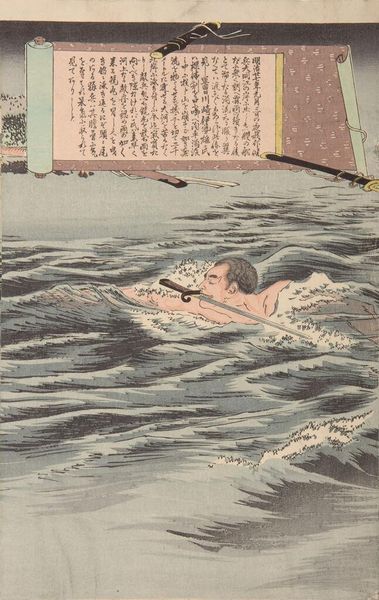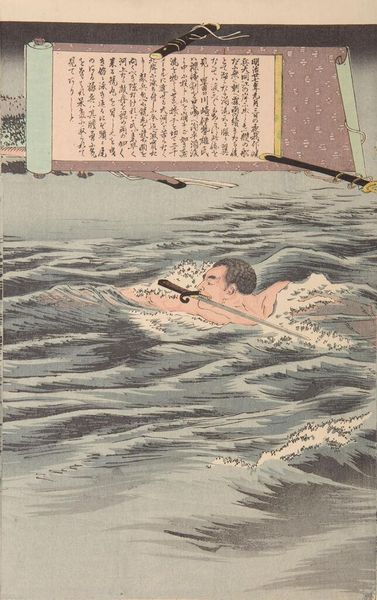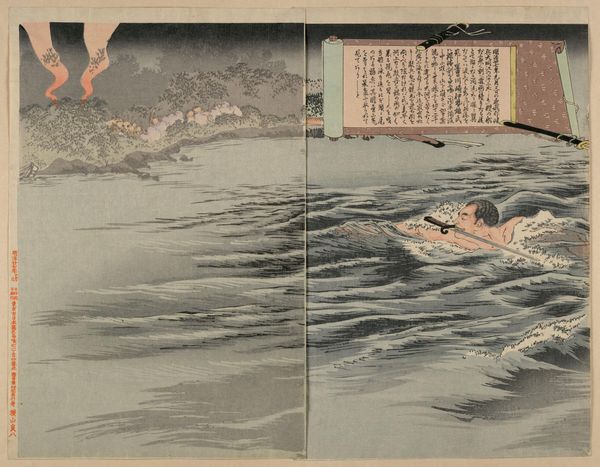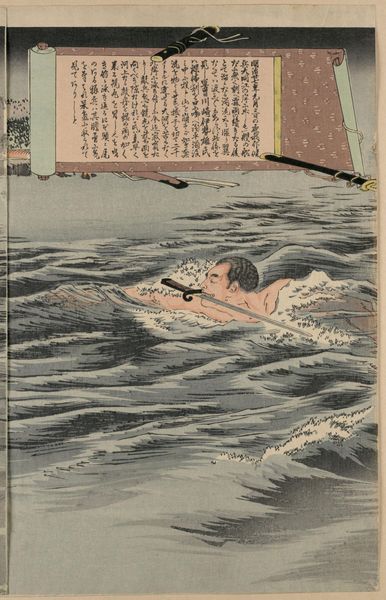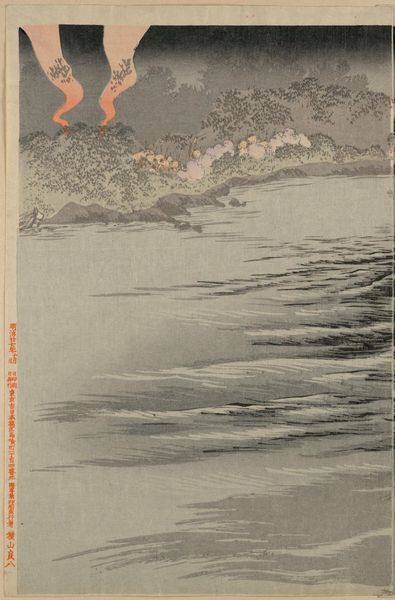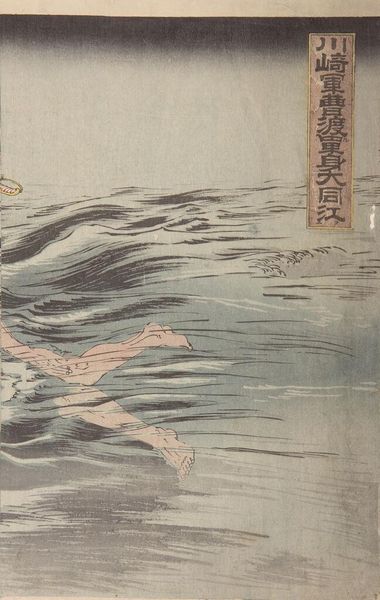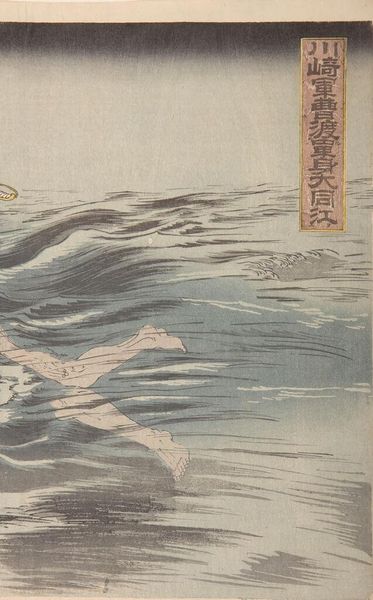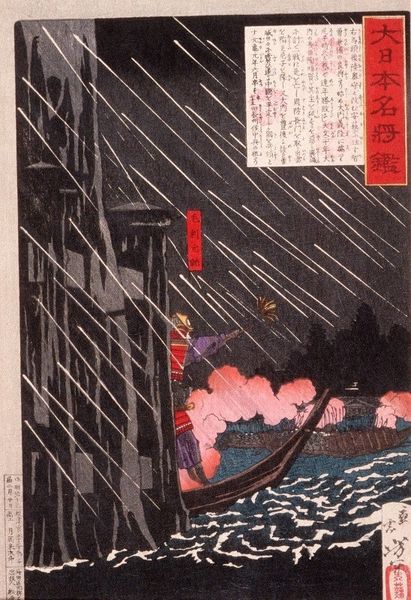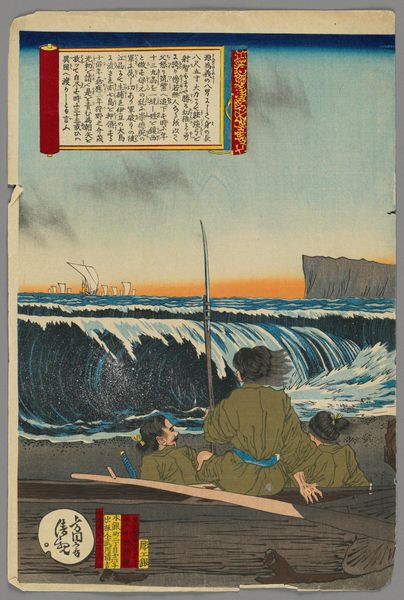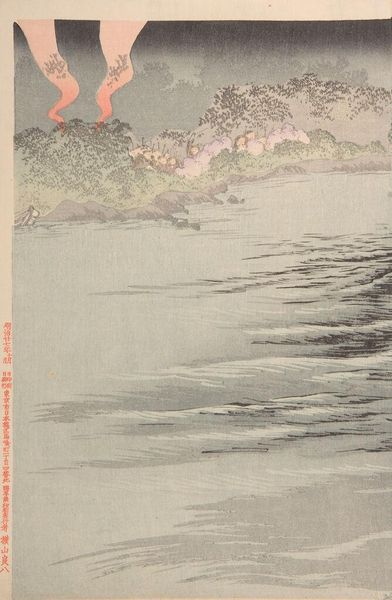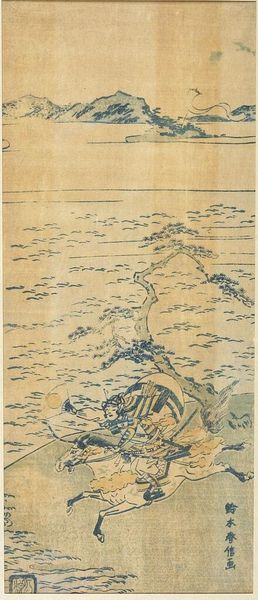
Triptych: Sergeant Kawasaki Crosses the River DaidÅkÅ Alone (Kawasaki gunsÅ tanshin DaidÅkÅ o wataru) Possibly 1894
0:00
0:00
Dimensions: 37 x 70.9 cm (14 9/16 x 27 15/16 in.)
Copyright: CC0 1.0
Editor: Mizuno Toshikata's "Triptych: Sergeant Kawasaki Crosses the River DaidÅkÅ Alone," portrays a lone figure battling turbulent waters. The monochrome palette evokes a sense of isolation and determination. What symbols resonate with you in this composition? Curator: The river itself is a potent symbol, isn't it? Think of it as more than just water; it represents obstacle, the passage from one state to another, fraught with danger. And the lone figure, armed only with a sword held in his mouth, suggests a warrior's resolve against overwhelming odds. Editor: So the image highlights the universal theme of man against nature? Curator: Indeed. But also consider the cultural memory embedded within this image. What does a lone warrior crossing a river evoke for a Japanese audience? Is it courage, duty, or perhaps even a critique of militarism? The imagery is powerful precisely because it taps into those deep-seated cultural narratives. What is your take? Editor: It seems like the painting honors sacrifice and perseverance, inviting contemplation about our personal struggles. Thank you for highlighting the deeper symbolic layers.
Comments
No comments
Be the first to comment and join the conversation on the ultimate creative platform.

